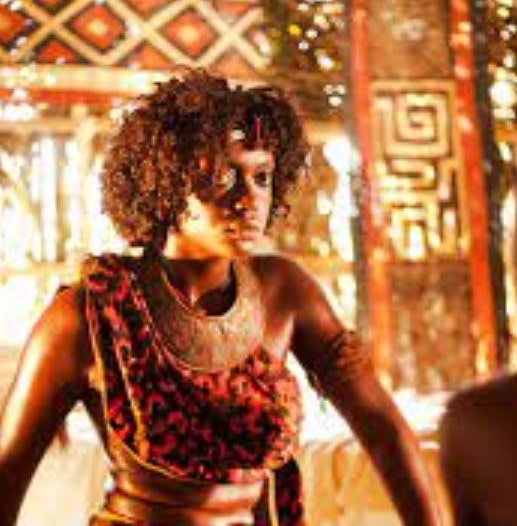In the first season of ‘African Queens,’ which is available on Netflix, Queen Njinga engages in a rousing struggle against the Portuguese in order to prevent her people from being enslaved in the Transatlantic slave trade
The plot is utterly enthralling. The historical show concentrates on various facets of her life, ranging from the quality of her personal relationships to the skill with which she served her country in battle.
The specifics of her life have undeniably piqued the interest of the public, but a significant number of people are also interested in learning more about any children that the African royal figure might have had.
How did it come to pass that her sister was the one who succeeded her on the throne? Now, we are going to investigate the same thing and provide you with the answers you require.
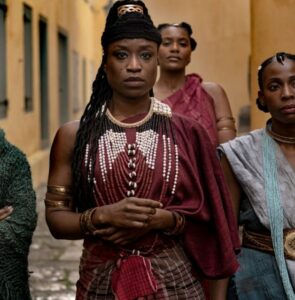
Also Read: Queen Njinga: Father, Who Ruled After Her? Life Story, Chronicles and More
Table of Contents
Queen Njinga: Children
It has come to light that Queen Njinga did, in fact, conceive and give birth to a child of her own while her father was still living.
There are several aspects of the tale that have not been delved into during the course of the historical series, despite the fact that viewers of the show may have a good working knowledge of this particular subject.
Although the specifics of how Njinga’s father, the King of Ndongo, died in 1617, the circumstances surrounding his death have never been established with certainty. After his passing, his son Mbande made the decision to ensure that he would succeed his father on the throne.
Yet, Mbande faced several challenges on his way to become king. Kiluaje, his older half-brother, was the patriarch of his own family and held a more legitimate claim to the land.
As a consequence of this, the aspirant monarch had his rival claimant and any possible heirs to the throne assassinated, including the opponent’s children.
This included Njinga’s little kid, who it is believed she conceived with her favourite concubine, Kia Ituxi. Njinga’s son was one of the victims.
The loss of her only son is a tragedy for the royal woman, and the show does a good job of conveying how devastated she is by the event.
It is a generally held belief that although Mbande was responsible for the death of Njinga’s little kid, he spared Njinga and his other two sisters from the same fate due to the popularity of these individuals.
On the other hand, it would appear that he was not the type of man to take any chances, since he mandated that his three sisters undergo coercive sterilisation.
The practise is not for those who are easily frightened, as it was reported that Mbande poured boiling oil that had been infused with herbs upon his sisters’ stomachs.
Queen Njinga: Biological Son
Many authorities are of the opinion that despite the fact that he ordered the sterilisation of all three sisters, he was particularly cruel to Njinga in his treatment of her because of the intense competition that had existed between the two of them for a significant amount of time.
It is impossible to demonstrate with certainty whether or not the process was carried out as planned. It is also difficult to determine whether or not such a technique would function as planned, given that it was primarily designed to do so by utilising shock, fear, and pain. This makes it difficult to know whether or not it would operate as intended.
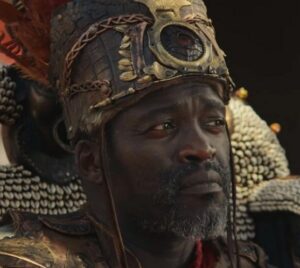
Notwithstanding this, it is a well-known truth that Njinga was unable to conceive another child after Mbande ordered the murder of her infant boy. This was a fact that has been well-established.
She forwent the customary method of election among her society in order to name Princess Kambu as her heir, and she maintained a strong link with her sisters throughout her life.
In fact, she named Princess Kambu as her heir before she died. She decided to engage in this nonstandard practise in the sake of facilitating a more seamless transition.
The show also makes reference to Njinga Mona, who was a significant character in the last years of the life of the female king. According to legend, his name suggested that Queen Njinga considered him to be a son in his own right.
However, the queen herself did not view him as a possible heir, and it is possible that this was because he was not her biological son. Regardless of the reason, she did not view him as a viable heir.
It is a generally held belief that Njinga’s choice to appoint her sister as the future ruler was motivated by her dread of Njinga’s Mona’s growing influence and his conviction in the Imbangala ways.
This idea is supported by a number of pieces of evidence. It would appear that the man was also married to Kambu, but after the death of Queen Njinga, he decided to rebel against her power.
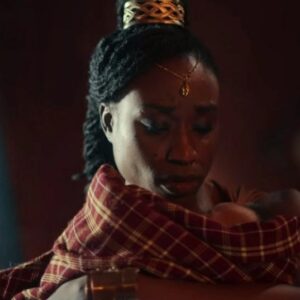
Queen Njinga: Who Was She?
Queen Anna Nzinga, who also went by the name Ana de Sousa Nzinga Mbande, reigned over the Ndongo and Matamba Kingdoms in the 16th and 17th centuries AD.
These kingdoms were located in what is now the country of Angola in the southern region of Africa. Queen Anna Nzinga was also known as Ana de Sousa Nzinga Mbande.
The most notable aspect of Queen Nzinga’s life is the resistance she put up against the Portuguese and the freedom she brought to her people as a result.
Also Read:
Queen Njinga: Bio
In the early half of the 1580s, Queen Nzinga made her entrance into the world. The Ndongo people were ruled by Ngola Kiluanji Kia Samba, Nzinga’s father. Nzinga’s father was also a monarch.
Nzinga was born in the same year that the king of Nzinga’s people started leading an uprising against the Portuguese colonialists.
It is stated that these Europeans raided the region of the Ndongo in search of slaves as they attempted to satisfy the growing demand for slave labour in their New World colonies such as Brazil.
In addition, the Portuguese were working towards the conquest of regions that they thought held silver resources.
Zimbabwe is home to the ruins of the ancient city of Khami, which served as the capital of the Butua kingdom.
One story claims that Ngola Kiluanji’s son, Mbandi, who was also Nzinga’s brother, was the one who overthrew his father’s authority.
It is also speculated that the new king was responsible for the death of the queen’s kid. Nzinga and her spouse may have fled to Matamba out of fear for their lives after they heard the news.
According to some accounts, Mbandi’s rule was both brutal and disorderly, and he was not a well-liked figure as a result. Others, on the other hand, do not bring this up.
It is possible, but not necessarily plausible, that Nzinga remained at her brother’s court and that the flight to Matamba was a later occurrence in Nzinga’s life. Matamba was located in a different region.
From the UNESCO series on women’s roles throughout African history comes Nzinga of Ndongo and Matamba. Pat Masioni is responsible for the illustrations.
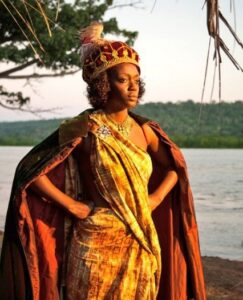
Queen Njinga: Early Life
Regardless of the outcome, the years 1621/2 were pivotal in Nzinga’s life. It was during this year that the Portuguese sent an invitation to Mbandi to participate in a peace conference that they hoped would result in an end to the fighting between their people and the Mbandi people (the Portuguese had forced the king to flee from his court in 1617).
Nzinga was dispatched to Luanda to represent the monarch in the meeting that would take place between Joao Corria de Sousa, the Portuguese governor, and Nzinga.
During this particular gathering, Nzinga was the subject of one of the more well-known tales that have been told. It is alleged that the Portuguese had only one chair ready for the conference before it took place in the room they had arranged.
Because of this, Nzinga would have been had to stand throughout the entirety of the negotiations, which would have given the impression that she held a lower status. Instead of doing that, Nzinga instructed one of her male workers to get on his hands and knees in order to serve as a chair for her.
The negotiations were fruitful, as evidenced by the fact that peace was finally accomplished, Mbandi was reinstated to his throne, and the Portuguese agreed to reduce the number of slave raids they conducted.
Nzinga also became a Christian, was baptised, and took the name Dona Ana de Sousa when she changed her name to reflect her new faith. The Governor of Portugal, João Corria de Sousa, and his wife were honoured with the role of becoming her godparents.
Nevertheless, this time of peace did not continue very long, and many years later, the Portuguese resumed their onslaught towards the Ndongo.
Queen Njinga: Battles
With the death of her brother in 1626, Nzinga ascended to the throne of her people and became their queen.
One source claims that the king took his own life as a result of the increasingly aggressive presence of the Portuguese in the region. Yet, according to a different account, Nzinga is the one who was responsible for the death of her brother.
At the same year, the Portuguese kept up their attacks on the Ndongo by enlisting the help of the Imbangala in order to carry out their military operations.
Nzinga and her people escaped to the west and established a new state at Matamba when they were unable to win a military conflict against the Portuguese.

Queen Njinga: Portuguese Colonial Rule in Africa
- Nzinga, who was originally from Matamba, participated in a conflict with the Portuguese that lasted for thirty years. In addition to taking other precautions, the queen made her kingdom a safe haven for slaves who had escaped their masters and African troops who had received training in Portugal.
- In addition to this, she sowed discord inside Ndongo, which at the time was under the indirect influence of the Portuguese through the use of a puppet king.
- In addition to this, Nzinga used the competition between European nations to her advantage. This may be seen in the alliance that she made with the Dutch, who competed with Portugal in the region. The Portuguese were her adversaries.
- The First Known Colonial Building in Sub-Saharan Africa, Revealed to the Public Candomble: The African-Brazilian Dance in Honor of the Gods The Monumental Tomb of Queen Tin Hinan, Ancient Ancestress of the Tuaregs Candomble: The African-Brazilian Dance in Honor of the Gods The first known colonial building in sub-Saharan Africa, with a dark history, revealed to the
- In 1641, the Dutch and the Matamba led a coordinated military assault on Luanda, which resulted in the expulsion of the Portuguese from the city.
- Nonetheless, the Portuguese made their way back to Angola the next year and were successful in retaking Luanda. Once the Dutch were driven out of Angola, the queen was forced to flee to Matamba, where she had taken refuge.
- Nzingha was not prepared to surrender, and she kept up her resistance against the Portuguese. But what was probably even more significant were the efforts that she made to turn her kingdom into a commercial power.
- Considering that it possessed a strategic position between a portion of the African coast and the interior of the continent, this was an ideal location for a commercial power.
- It is stated that by the time Matamba passed away in 1663, the state she ruled had grown into a powerful commercial entity that was able to compete on an equal basis with the Portuguese.
Also Read:
